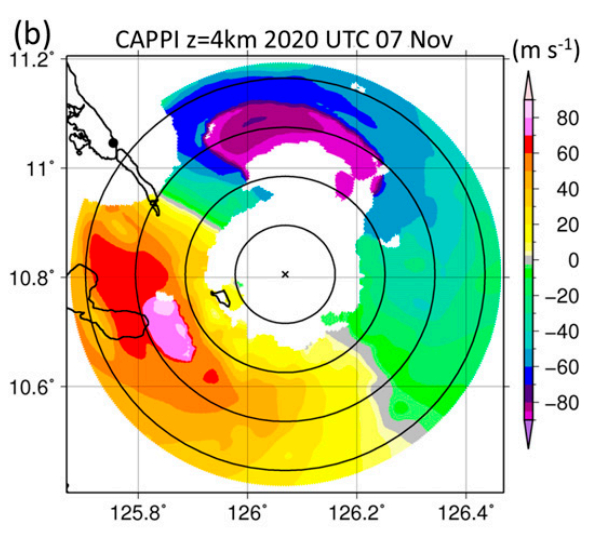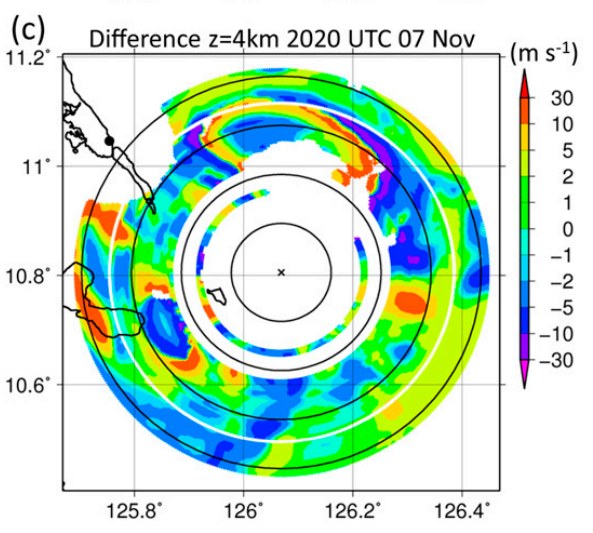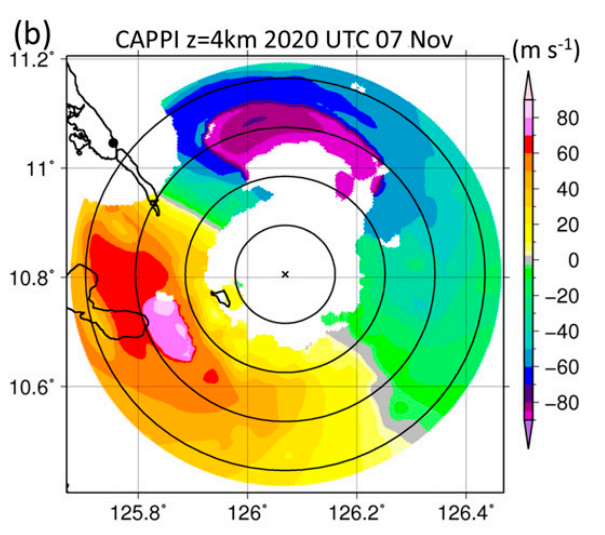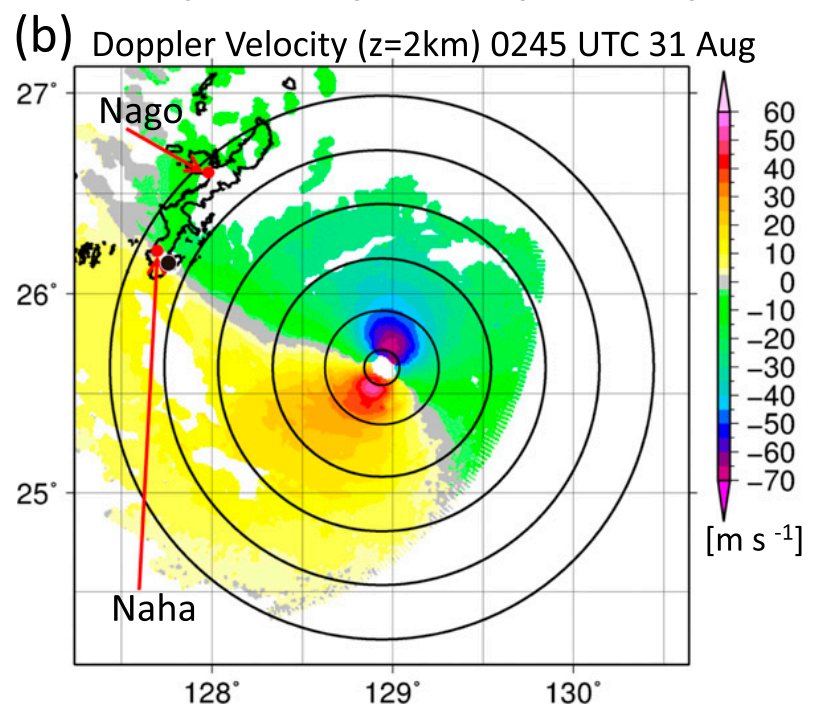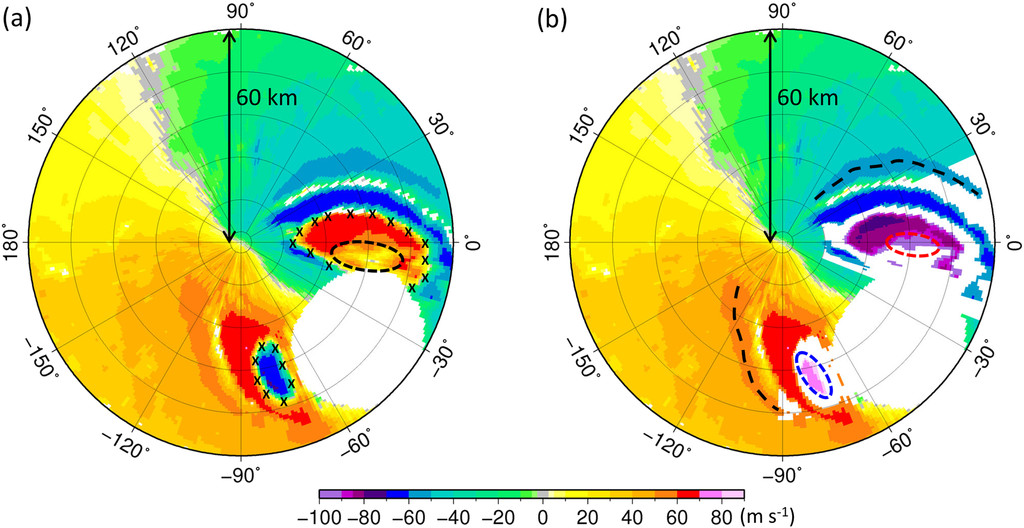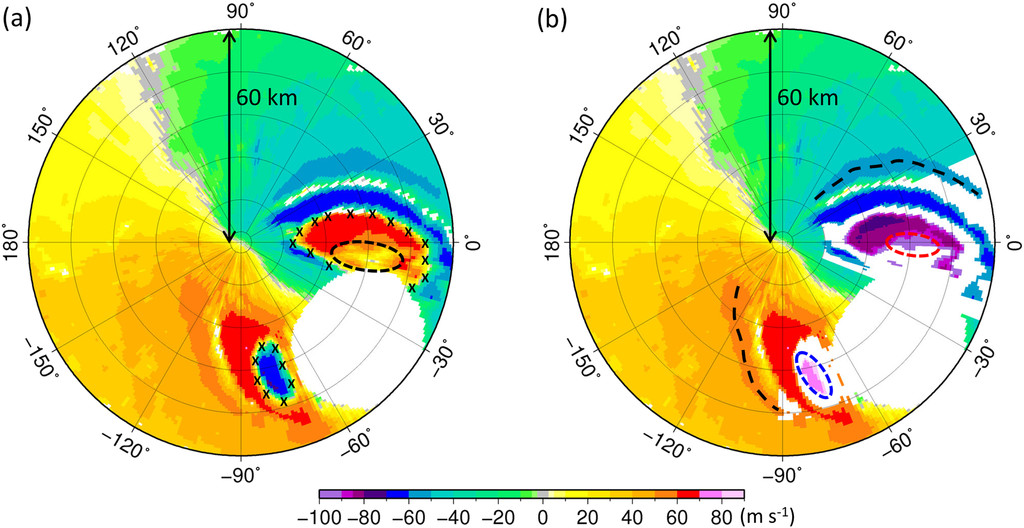

2023z 仰角6度的多普勒速度数据,图(b)为退模糊并舍弃无效数据以后的多普勒速度数据。图(b)中的椭圆为估计的最大多普勒速度位置。
那么,论文使用了什么方法过滤上述两种异常值呢?
We removed the outliers from the Doppler velocity data by using threshold values that we determined from the Doppler velocity patterns. The threshold values were the same for all PPI scans. In the region of inbound Doppler velocities, all absolute Doppler velocities <50m/s in the vicinity of areas I and II were removed. In the region of outbound Doppler velocities, all Doppler velocities >-65m/s and <50m/s in the vicinity of area I were removed.
论文使用了
人工设定的多普勒速度阈值过滤以上两种异常值。对于雷达东侧的一个扇形区域,也就是海燕北侧眼墙所在的区域,过滤了所有多普勒速度>-50m/s且<50m/s的数据;对于雷达南侧的另一个较小的扇形区域,也就是海燕西侧眼墙所在的区域,过滤了所有多普勒速度>-65m/s且<50m/s的数据。
这样的过滤方式虽然去除了大部分异常值,但是仍然存在许多问题(实际上HCl提到过速度模糊边界区的异常值可能可以有更好的方法)。比如,速度模糊边界区的异常值并没有完全被剔除,还剩下一些残留;更重要的是,
这样的过滤使海燕的多普勒速度数据存在很大缺失,甚至在北侧风力最大的区域,大部分数据都是空缺的;再者,图b是过滤并退模糊后的速度图,其中的最大多普勒速度,完全取决于过滤时阈值的设定,比如北侧的过滤阈值是50m/s,那么过滤并退模糊后能保留的(绝对值)最大多普勒速度就是50m/s-2*76.63m/s≈97m/s。

 吉万雷达的参数
吉万雷达的参数
 吉万雷达的参数
吉万雷达的参数
